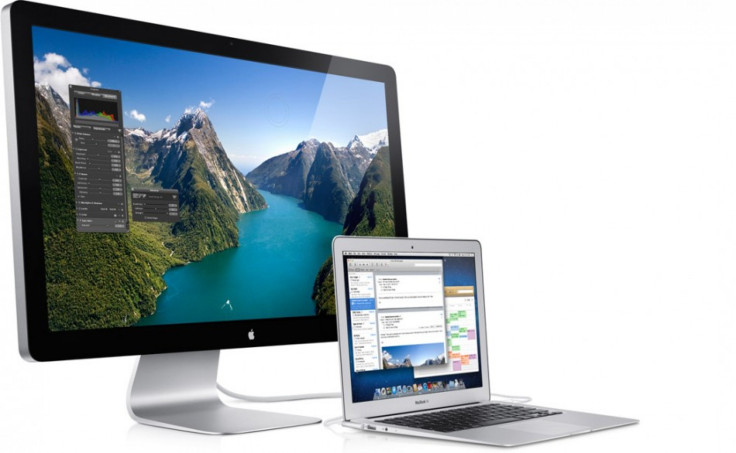Apple Debuts 'World's First Thunderbolt Display'

Alongside its highly anticipated releases Mac OS X Lion and Intel Sandy Bridge-based MacBook Air, Apple also has launched the world's first Thunderbolt Display.
Priced at $999, the display builds upon Apple's Thunderbolt I/O technology. Thunderbolt Display sports an LED-backlight expansive 27-inch display with a whopping 2560x1440 screen resolution with 16:9 aspect ratio. It also has a built-in FaceTime HD camera and a microphone.
The unit also is equipped with an ambient sensor that sets the display's brightness in proportion to the room environment. Thunderbolt Display allows users to choose a viewing angle from 5 to +25 degrees. The display also features built-in speaker systems.
The Thunderbolt I/O which is currently available with MacBook Air, MacBook Pro, iMac and Mac Mini, provides native support for Thunderbolt Display. The Display also acts as a docking station for MacBook Air and Pro as it comes with a MagSafe connector that charges the devices. It also has three USB ports and support for FireWire 800 and Gigabit Ethernet.
Thunderbolt I/O enables one to daisy-chain up to six peripherals. It offers up to 10Gbps transfer speeds and offer PCI Express performance. It also extends 10 watts of power to peripherals.
Thunderbolt I/O could outdo work done on USB 3.0 I/O which expects to deliver a 5 Gbps signaling rate. However, questions remain as to whether Thunderbolt I/O will replace the USB I/O standard. CRN quoted David Doyle, vice president of Simply Computing, a Vancouver-based Apple partner, who believes that Thunderbolt will switch to fiberoptic material and will be re-branded as Light Peak -- the moniker given by Intel -- and will take on the USB market. Thunderbolt currently uses copper wire and once it starts using optical fiber, it will be renamed as LightPeak, said Doyle.
However, other partners do not share the same viewpoint that Thunderbolt will supplant USB 3.0 -- but rather expect that Thunderbolt will become an option for high-end peripherals while USB 3.0 will go on to replace USB 2.0.
ALSO READ: Mac OS X Lion Praised for Its Big Leap, Rides On The Dawning iOS Era
© Copyright IBTimes 2024. All rights reserved.




















